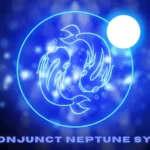Introduction to the Feast of Dionysus Painting
The Feast of Dionysus painting is more than just a canvas adorned with color and form; it’s a vibrant tapestry woven from the threads of myth, culture, and human emotion. This artwork invites viewers to step into a world where reality dances hand-in-hand with the fantastical. Imagine lush vineyards under a golden sun, revelers lost in ecstasy, and echoes of ancient stories whispering through the air. Every brushstroke captures not only an event but also the essence of life itself—the joy, chaos, and exuberance that come alive when we celebrate our existence.
Diving deep into this masterpiece opens up a treasure trove of symbolism and meaning. It brings forth questions about identity, divinity, and humanity’s relationship with nature—timeless themes that resonate even today. Join us as we explore this captivating work that immortalizes both the divine spirit of Dionysus and the intricate dance between myth and reality.
The Mythology of Dionysus
Dionysus, the Greek god of wine and revelry, embodies duality. He is both joyous and chaotic. This complexity makes him a fascinating figure in mythology.
Born from Zeus and a mortal woman, Semele, his origins are steeped in tragedy. His mother perished after witnessing Zeus’s divine form. Yet Dionysus emerged as a symbol of resurrection and rebirth.
His followers, the Maenads, celebrated his arrival with frenzied dances under moonlit skies. They embraced ecstasy through music and wine.
Often depicted with grapevines and leopards at his side, he represents fertility and nature’s bounty. Dionysus blurs boundaries—between civilization and wildness, man and nature.
Festivals held in his honor were marked by theatrical performances that intertwined myth with daily life. Through chaos came creativity; through madness blossomed art.
This rich tapestry of stories reveals why Dionysus remains an enduring icon throughout history.
The Symbolism in the Painting
The Feast of Dionysus painting is rich with symbolism that invites deeper exploration. Each element serves to enhance the narrative, offering multiple layers of meaning.
Dionysus himself stands as a representation of ecstasy and liberation. His presence embodies the spirit of revelry, inviting viewers into a world where boundaries dissolve.
Wine plays a crucial role in this painting. It symbolizes not just intoxication but also transformation—an invitation to transcend everyday reality and embrace chaos.
Floral motifs weave through the composition, representing fertility and abundance. These elements celebrate nature’s cyclical beauty, echoing themes central to Dionysian worship.
The figures surrounding Dionysus illustrate varying human experiences—from joy to despair—capturing the duality of existence. Each character adds depth to the celebratory scene while hinting at life’s complexities behind the festive facade.
Analysis of the Characters and Scenes in the Painting
The characters in the Feast of Dionysus painting are vibrant and dynamic. Each figure tells a story, embodying the spirit of revelry and ecstasy associated with the god.
Dionysus himself stands as a central figure, draped in lush fabrics that signify his divine status. His expression radiates joy, inviting viewers to join the celebration.
Surrounding him are satyrs and nymphs, dancing freely under the influence of wine and nature’s bounty. Their poses capture movement, creating an atmosphere charged with energy.
Scenes filled with grapevines and playful interactions reinforce themes of abundance and pleasure. The background is alive with color—rich greens juxtaposed against deep purples—enhancing the sense of festivity.
Each character’s unique expression adds depth to their role within this mythic tableau. Emotions range from blissful abandon to mischievous delight, offering a glimpse into ancient Greek culture where joy mingled closely with divinity.
Interpretation of the Feast of Dionysus Painting
The “Feast of Dionysus” painting invites viewers to explore a rich tapestry of emotions and symbols. It captures the essence of celebration intertwined with chaos, reflecting the duality inherent in life itself.
Each character contributes to this dynamic narrative. The joyous dancers embody ecstasy, while others portray a sense of introspection. The varying expressions provoke thought about personal experiences with joy and sorrow.
Color plays an essential role here. Warm hues evoke warmth and festivity, contrasting sharply with cooler tones that hint at underlying tension or contemplation.
This work transcends mere representation; it becomes a mirror for the audience’s own journey through pleasure and pain. Engaging with this piece is not just an observation but an invitation to participate in its unfolding story—a shared experience between the viewer and ancient myth.
Comparison with Other Depictions of Dionysus in Art
Dionysus, the god of wine and revelry, has inspired countless artists throughout history. Each depiction offers a unique lens on his character and mythology.
For instance, in classical sculptures like “Bacchus” by Michelangelo, the focus is on his physical form and divine beauty. The muscles are pronounced, emphasizing strength alongside sensuality.
In contrast, paintings from the Baroque era often highlight emotional intensity. Artists like Peter Paul Rubens portray wild festivities bursting with color and movement. These scenes emphasize indulgence and chaos—a stark shift from earlier interpretations.
Modern representations can be abstract or fragmented. Contemporary artists might explore themes of addiction or liberation through Dionysian symbolism.
The variety in these artworks reflects changing cultural attitudes toward pleasure, excess, and divinity—showcasing how this ancient figure continues to resonate today across different artistic expressions.
The Legacy of the Feast of Dionysus Painting
The legacy of the Feast of Dionysus painting stretches far beyond its canvas. It has inspired countless artists, writers, and musicians throughout history. The vivid portrayal of celebration and excess invites viewers to explore their own relationship with joy and chaos.
This artwork embodies a cultural touchstone that resonates with themes of transformation and revelry. Its influence can be seen in modern adaptations ranging from theater productions to contemporary art pieces that echo its spirit.
Moreover, the painting serves as a historical document. It reflects ancient societal values surrounding fertility, wine, and community bonding during festivals dedicated to Dionysus. Scholars continue to dissect its layers for insights into Greek mythology’s enduring relevance.
Today, exhibitions featuring this work attract audiences eager to connect with these timeless narratives. Each viewing rekindles fascination for both mythological stories and human experiences intertwined through artistic expression.
Conclusion: How the Painting Captures both Myth and Reality
The Feast of Dionysus painting serves as a captivating bridge between myth and reality. It immerses viewers in the rich tapestry of ancient Greek culture, inviting them to explore the depths of human emotion and experience through its vivid imagery. The characters come alive with their tales of ecstasy, revelry, and chaos.
This artwork encapsulates not only the divine nature of Dionysus but also reflects universal themes that resonate today—joy, sorrow, freedom, and restraint. Each brushstroke tells a story that transcends time. As you gaze upon it, you can almost hear the laughter and music echoing across centuries.
By portraying both gods and mortals in their shared celebration, this painting reminds us that our realities are often intertwined with myths we hold dear. It captures an essence that is deeply human while still firmly rooted in legend.
The Feast of Dionysus painting stands as a timeless reminder: life itself is a dance between fantasy and reality—a beautiful interplay that invites us all to partake in its wonders.
FAQs
What is “Feast of Dionysus Painting”?
The “Feast of Dionysus Painting” is a vibrant artwork that blends myth and reality, depicting the celebration of Dionysus, the Greek god of wine and revelry, filled with symbolism and emotion.
What is the significance of Dionysus in the painting?
Dionysus represents ecstasy, liberation, and the celebration of life. His presence in the painting symbolizes both chaos and creativity, highlighting the duality of joy and madness.
How does the symbolism of wine appear in the painting?
Wine in the painting symbolizes transformation and transcendence, inviting viewers to step into a world where reality dissolves, and divine chaos and revelry take center stage.
What roles do the characters in the painting play?
The characters, including satyrs and nymphs, embody different aspects of human experience, from blissful joy to introspective contemplation, reflecting the emotional complexity of Dionysian celebration.
How does the painting differ from other depictions of Dionysus in art?
Unlike earlier, more classical depictions of Dionysus, the “Feast of Dionysus” painting focuses on emotional intensity and the chaotic beauty of revelry, offering a more dynamic and expressive interpretation of the god’s influence.







